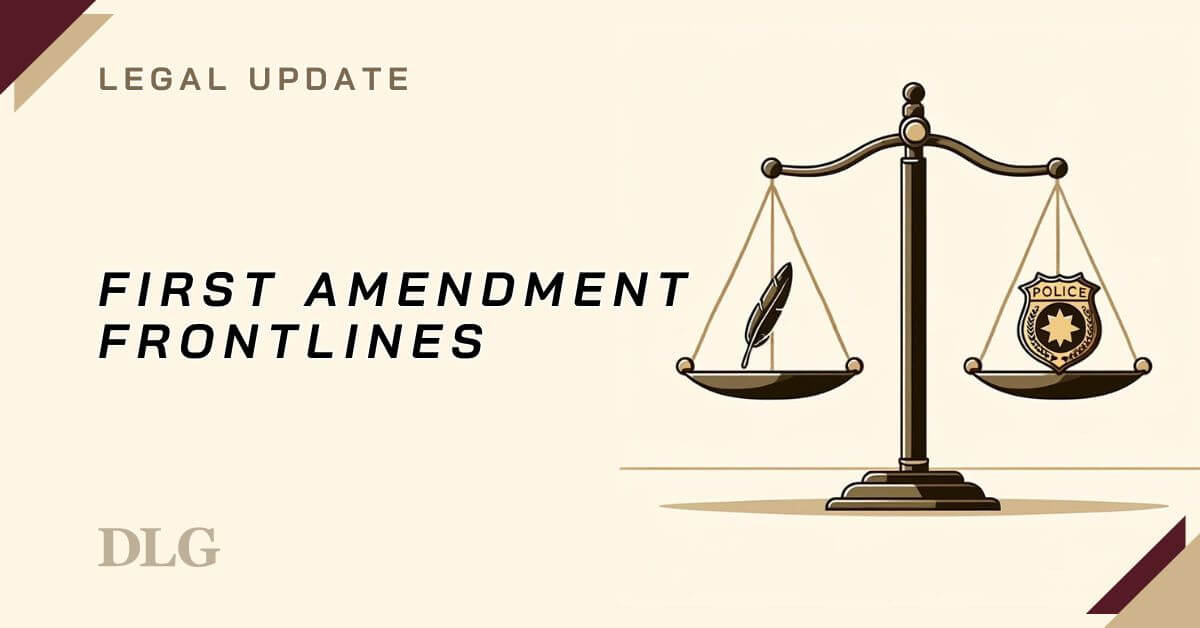Today’s case highlights the important role that all of the facts play in a court’s legal calculation and an important operational consideration for your agency: it is necessary to have a plan in place that allows officers to change and reevaluate the use of force throughout an incident. Especially in today’s age of video recording and all eyes on our officers, we must be vigilant in assessing and reassessing force throughout an incident. What may be a reasonable force consideration at one point during the incident may become an unreasonable option as the incident de-escalates or if the officer or citizens surrounding the area are no longer in danger.
FACTS
While there is some dispute over the facts of this case, the following facts were what were considered by the trial court and the 8th Circuit in deciding this matter. Little Rock Arkansas officers received several 911 calls that there was a fight occurring at the home of Darrell Underwood and one caller reported seeing a gun.
Arriving officers parked a short distance away and walked up to the scene. Prior to the officers’ arrival several neighbors advised Underwood and his nephew – Roy Lee Richards – that the police were walking up to the scene. Richards and Underwood stopped fighting – Underwood walked towards his front porch and Richards walked to his car.
Richards retrieved what appeared to be a long rifle from the passenger side of the vehicle after Underwood had entered his home. Richards walked with the rifle (later determined to be a pellet gun) to Underwood’s front porch. Seeing that Underwood had gone in the house and locked the door, Richards turned and started walking back to his car.
As Richards walked to his car with the rifle pointed straight upward one officer fired at Richards five times without warning, killing him.
Vanessa Cole, Executor for the estate – brought suit in federal court claiming that the use of force was excessive and a violation of Richards’s 4th Amendment protections. Following discovery, Officer Hutchins filed a summary judgment motion claiming that he was entitled to qualified immunity. The trial court denied the officer’s motion finding that it was clearly established that it was unreasonable for the officer to use deadly force on a suspect “who posed no immediate threat to cause serious physical injury or death”. The defendant officer then filed this appeal.
8TH CIRCUIT FINDINGS
The court first noted a number of considerations that were “clearly established” at the time of the incident in question. First, the court observed that an officer must have probable cause to believe the suspect poses “an immediate threat of death or serious physical injury to others” before using deadly physical force. More importantly, the mere fact that a suspect is in possession of a weapon is not enough to meet this standard. In addition to being in possession of the weapon the suspect “must point the weapon at another individual or take other menacing action”.
Additionally, in order to be perceived as an immediate threat, it must be just that, an immediate threat. If the threat has passed then the justification for using deadly force has also passed. As the court summarized, “force that is reasonable while the suspect poses a threat is no longer reasonable once the threat is no longer present.” The court also noted that it was clearly established that officers provide a warning, where feasible. While the failure to provide a warning does not automatically make the use of force unreasonable, the failure to warn may be considered in determining whether the use of force was unreasonable.
Considering the facts in a light most favorable to the plaintiff, the court determined that Richards was no longer a threat to his uncle. Richards had moved off the porch and was walking back to his car with the rifle pointed towards the sky. At the time the defendant officer fired the shots, Richards was not a threat to the officer and the fact that the officer did not provide a warning served to exacerbate the situation. The appellate court affirmed the trial court decision finding that, under the circumstances, the law clearly established that the defendant officer’s use of force was unreasonable.
TAKEAWAYS
I’m sure most of you remember that use of Force instructor who was always harping on you to re-evaluate your circumstances. This case emphasizes the importance of that training – both from a tactical standpoint and a legal one. By now it should come as no surprise to you that the court determines whether a particular force option was reasonable AT THE TIME IT WAS INITIATED and this small fact can be a double-edged sword…
Certainly, the fact that a court must evaluate the officer’s use of force at the time it was initiated and without the 20/20 vision of hindsight is beneficial to an officer’s defense. On the other hand, this also means that a force option that may be reasonable at one point in the scenario may become an unreasonable option minutes, or even seconds later. As the 8th Circuit noted in this case “force justified at the beginning of an encounter is not justified even seconds later if the justification for the initial force has been eliminated”.
It is imperative that officers constantly re-evaluate their use of force options and practice good de-escalation tactics. It is also important that officers document the incident and the specific actions of the suspect and the officers in their report. During qualified immunity cases and use of force cases your reporting is crucial as one small fact or second during an incident can change the court’s decision.
Cole v. Hutchins, No. 19-1399 (8th Cir. 2020)



